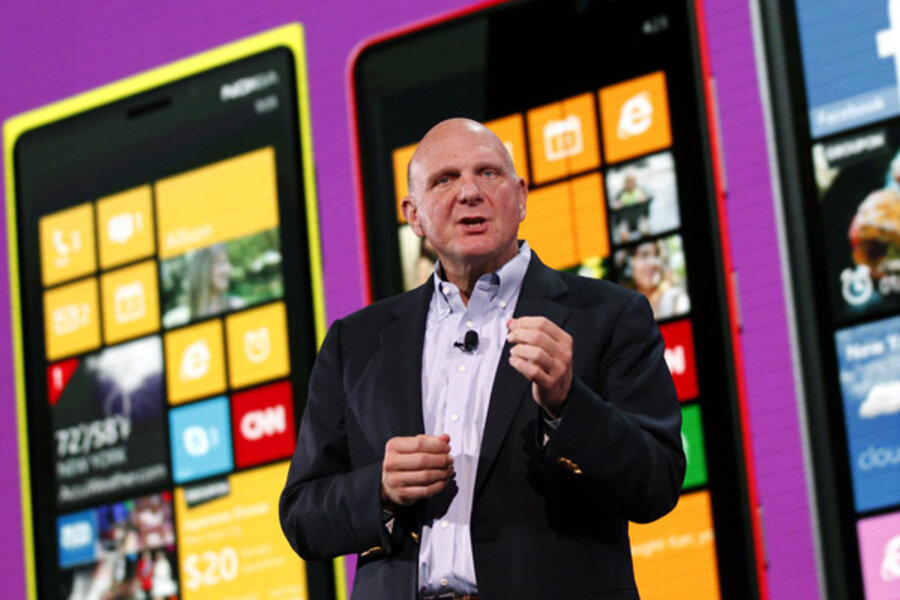With Windows Phone 8, Microsoft finds a middle way
Loading...
As we head into November, a dark-horse candidate has shaken up the race. While partisans for Apple and Android stay firmly aligned with their establishment parties, Microsoft's Windows Phone now offers independents an attractive third platform.
Apple's iPhone focuses on consistency and simplicity. All Apple phones look nearly identical, and the software feels very intuitive, even to people unfamiliar with smart phones. Meanwhile, Android stands for choice. It comes in many variations – large screen or small, keyboard or no, standard software or endlessly tweakable – but that customization can seem daunting to newcomers.
"Windows Phone appears to have some of the best, not the best, but some of the best elements of both worlds," says Michael Gikas, senior electronics editor for Consumer Reports. "On the one hand, it's very simple, as opposed to the chaos of the Android operating system.... But there's also some degree of customization, certainly more than you can get on an Apple phone."
Even at first blush, Windows Phone devices are unmistakable. The home screen sports a stylish, monochromatic grid of tiles. Each of these "live tiles" represents a different feature, such as e-mail, text messaging, and the Web browser. But unlike with the iPhone, you can expand or shrink these colorful boxes to suit your tastes. For example, if you opt for a large calendar tile, the phone will use the extra room inside the tile to display your next appointment right on the home screen. If that's not important to you, you can reduce the size, making room for other applications. In either case, a simple tap on the tile will pull up the full calendar app.
Microsoft released a major update in late October called Windows Phone 8. Despite the name, this is not the same as Microsoft's desktop operating system, Windows 8, which also launched in late October. The similar name simply reminds people that Windows 8 and Windows Phone 8 both use the live-tile design.
Of course, modern phones are only as good as the apps that run on them. The Windows Phone app store features about a fifth as many apps as Apple's and Android's. Microsoft has tried to overcome this deficit by looking at many of the most popular apps on other phones and working those features into the core operating system. For example, the phone can identify what song is playing in a room and you can then buy the track from Microsoft's online store (essentially the same service as the Shazam app on other phones).
"They borrowed from both extremes," says Mr. Gikas, "and came up with something that a lot of people are going to appreciate."
For more on how technology intersects daily life, follow Chris on Twitter @venturenaut.





